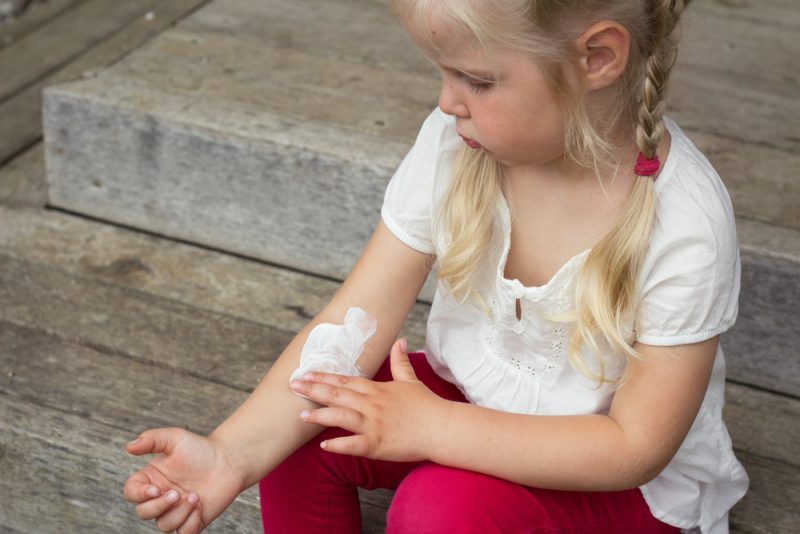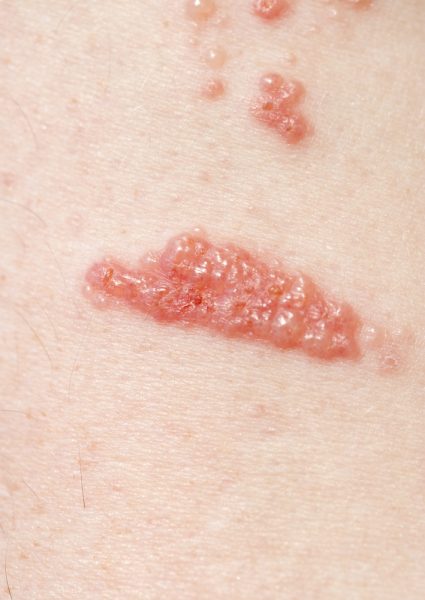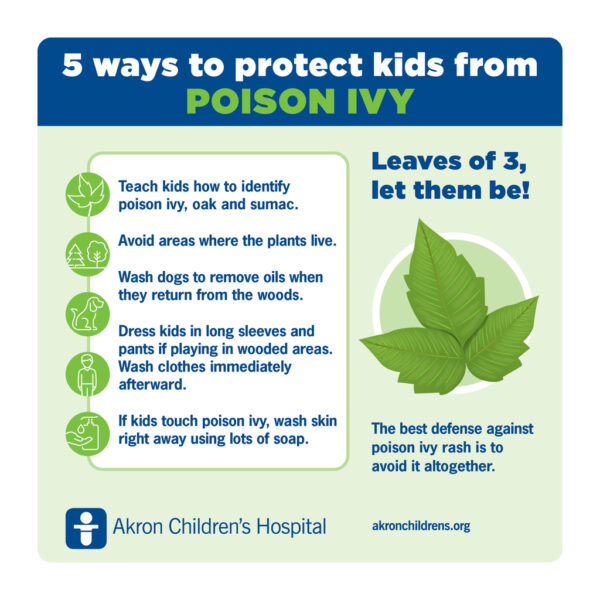
You’ve probably heard the rhyme, leaves of 3, let them be! It’s that time of year when kids are playing outdoors more, putting them at greater risk for catching the poison ivy rash.
Typically, the rash looks like lines or streaks on the skin, which becomes red, itchy and swollen with blisters that ooze clear fluid. After a few days, the blisters may become crusty and start to flake off. It can take 1 to 2 weeks to heal.
Contrary to popular belief, the rash cannot be spread from person to person. The fluid in the blisters is not contagious. Spreading occurs when small amounts of the oil remain under a child’s fingernails or on her clothing that then comes into contact with other parts of her body.

Poison ivy rash
The good news is mild rashes can be treated at home, and mostly cause discomfort from itching, burning or blistering. Akron Children’s offers 5 ways to help ease your child’s discomfort and treat a mild poison ivy rash.
- Apply calamine lotion 3 or 4 times a day to ease the itching.
- Apply topical 1 percent hydrocortisone cream to decrease the inflammation.
- Trim your child’s fingernails to discourage scratching and prevent her from breaking the skin when doing so.
- Draw a cool bath or oatmeal bath to soothe her skin. Applying cold compresses also may help.
- If your pediatrician recommends it, try an oral antihistamine to reduce the itching at night if your child is having trouble sleeping.
Severe, widespread rashes require medical treatment. If the rash is extensive on the face or covers a large portion of the body, your child’s pediatrician may prescribe pills or creams that contain antihistamines or steroids to decrease itching and redness.
If the rash becomes severe or shows signs of infection, such as fever, pain or increased swelling beyond the lesions, contact your pediatrician. If your child is severely allergic to the plants, they can develop life-threatening anaphylaxis that requires immediate medical attention.
5 ways to prevent poison ivy rash
Poison ivy can grow anywhere — from the woods to suburban backyards — and it can be difficult to identify.
Not only can the green leaves of poison plants blend right in with other plants and brush, but there are several types of poison ivy, and each one can look different depending on the time of year.
Worse yet, kids can pick it up without even touching the plant. Anything that comes into contact with the plant, such as a ball or pet, can spread it. Urushiol can even travel through the air if someone burns the plants. For more information or to schedule an appointment, contact our primary care offices or call 330-543-2778. MyChart makes it easy to schedule virtual visits and in-person appointments.
For more information or to schedule an appointment, contact our primary care offices or call 330-543-2778. MyChart makes it easy to schedule virtual visits and in-person appointments.










